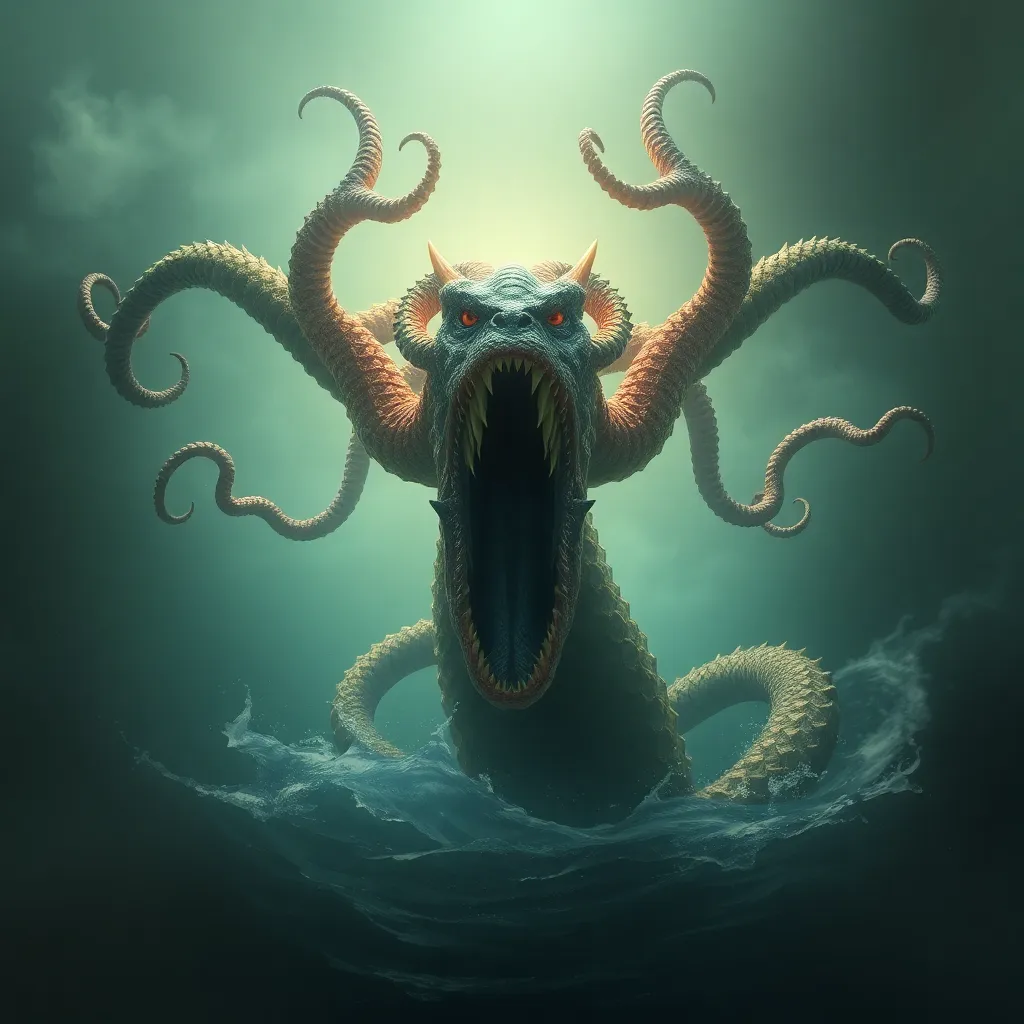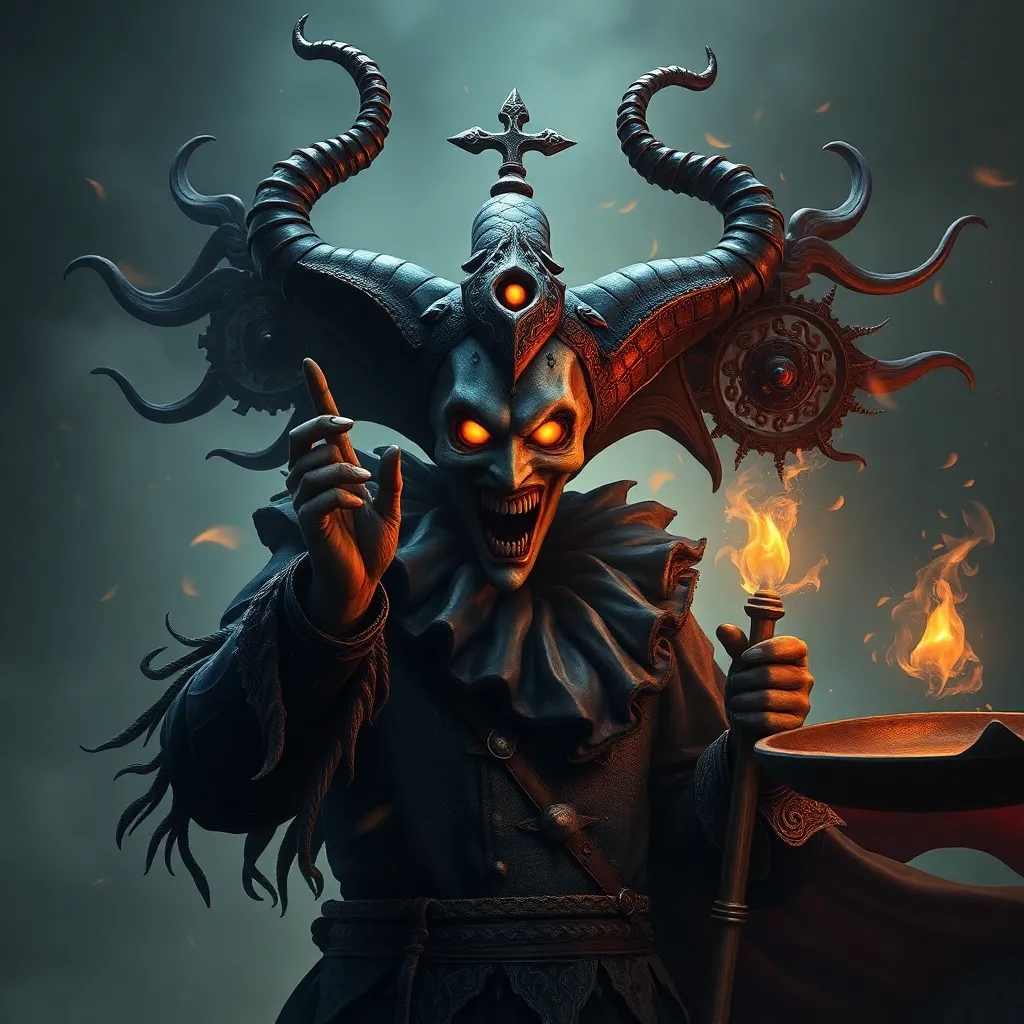The Hydra’s Bite: Unveiling the True Nature of the Monster in Greek Mythology
I. Introduction
The Hydra, one of the most fascinating and fearsome creatures in Greek mythology, is often depicted as a multi-headed serpent-like monster. Its mythical narrative captures the imagination, symbolizing not just a physical challenge but also the complexity of human struggles against insurmountable odds. The Hydra has been a significant figure in various cultural and literary contexts, serving as a metaphor for chaos, adversity, and the resilience of the human spirit. This article aims to explore the multifaceted nature of the Hydra, delving into its origins, characteristics, and enduring legacy.
II. Origins and Mythological Background
The Hydra is said to be the offspring of Typhon, a monstrous giant, and Echidna, often referred to as the mother of all monsters. This lineage places the Hydra within a broader context of Greek mythology, where it shares the spotlight with other formidable beasts.
Historical accounts of the Hydra can be found in ancient texts, such as the works of Hesiod and Apollodorus. In these narratives, the Hydra is often portrayed as a guardian of the Lernaean marsh, a treacherous and swampy area in the Argolid region of Greece. The marsh’s significance lies in its association with various myths and its reputation as a site of danger and mystery.
III. Physical Description and Characteristics
The Hydra’s most defining features include its multiple heads—usually depicted as having seven to nine heads—along with its formidable regenerative abilities. According to myth, for every head that was severed, two more would grow back in its place. This characteristic made the Hydra a particularly challenging adversary.
The symbolism of the Hydra’s appearance is rich and varied. The multi-headed design represents chaos and the complexities of confronting overwhelming challenges. It serves as a reminder of how difficulties can multiply if not addressed properly.
In terms of artistic representation, the Hydra has been depicted in various styles and mediums, from ancient pottery to Renaissance paintings. Each portrayal reflects the artist’s interpretation of the creature’s essence, often emphasizing its terrifying beauty and power.
IV. The Twelve Labors of Heracles: The Hydra Encounter
The Hydra is perhaps best known for its role in the Twelve Labors of Heracles. These labors were a series of tasks that Heracles, a demigod renowned for his strength and bravery, was required to complete as penance.
During his second labor, Heracles was tasked with slaying the Hydra. The encounter took place in the Lernaean marsh, where Heracles faced the beast in a fierce battle. As he fought the Hydra, he quickly realized that severing its heads was not enough to defeat it, as they would regenerate rapidly.
Heracles’ cousin, Iolaus, played a crucial role in this battle. Recognizing the need for a different strategy, Iolaus used a torch to cauterize the necks of the severed heads, preventing them from growing back. This teamwork exemplifies the importance of collaboration in overcoming challenges.
V. Symbolism and Interpretations of the Hydra
The Hydra serves as a powerful symbol of chaos and adversity. It embodies the struggles that individuals face when confronted with seemingly insurmountable obstacles. The multi-headed nature of the creature reinforces the idea that challenges can multiply and become more complex if not faced head-on.
Psychologically, the Hydra can represent fear and resilience. The act of confronting one’s fears is a central theme in many narratives. The Hydra’s regenerative abilities can symbolize the persistence of problems or fears that can resurface, requiring ongoing effort to manage and overcome.
In modern contexts, the Hydra has found its way into literature, film, and pop culture, often serving as a metaphor for various forms of adversity. From movies to video games, the creature continues to resonate, representing the universal struggle against chaos.
VI. The Hydra in Comparative Mythology
The concept of multi-headed monsters is not unique to Greek mythology. Similar creatures appear in various mythologies around the world, such as:
- Naga – Serpent beings found in Hindu and Buddhist traditions, often possessing multiple heads and a connection to water.
- Yamata no Orochi – A legendary eight-headed serpent from Japanese mythology, defeated by the hero Susanoo.
These creatures share common themes of regeneration and monstrous adversaries, illustrating a universal fascination with the concept of chaos embodied in the form of a creature that defies natural laws.
VII. Legacy and Cultural Impact
The Hydra’s influence extends far beyond ancient texts, permeating literature, art, and modern media. The creature has inspired countless stories, ranging from classic literature to contemporary films.
In contemporary storytelling, the Hydra often appears as a symbol of the challenges that protagonists must overcome. Its representation can serve as a reminder of the complexities of human nature and the struggles we all face. The enduring fascination with the Hydra is evident in:
- Literature: The Hydra’s story has inspired authors to explore themes of resilience and conflict.
- Art: Artists have utilized the Hydra’s image to convey deeper meanings about fear and adversity.
- Modern Media: Video games and films frequently feature multi-headed creatures, echoing the Hydra’s legacy.
VIII. Conclusion
The Hydra stands as a significant figure in Greek mythology, symbolizing chaos, adversity, and the complexities of human struggle. Its story and characteristics invite deeper reflection on the challenges we face in life and the resilience required to overcome them. The broader implications of the Hydra’s myth encourage further exploration of mythological creatures and their meanings, highlighting their relevance in understanding human nature and the world around us.



